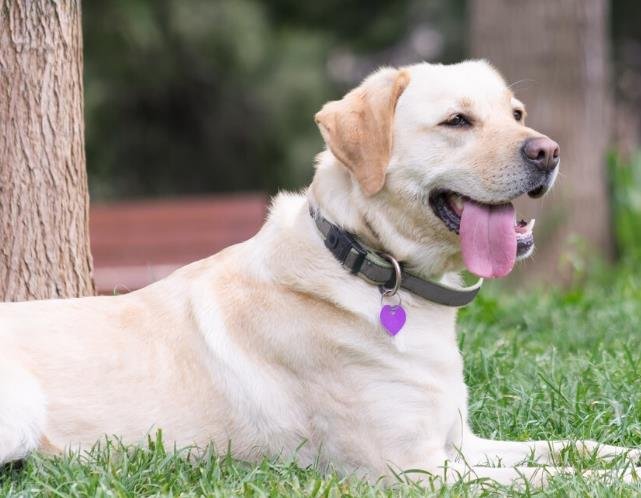Introduction to Child-Friendly Dog Breeds
Choosing the right dog breed for a family with children is a decision that requires careful consideration. The temperament and characteristics of the dog breed play a crucial role in determining how well they will integrate into a household with young kids. Certain breeds are renowned for their gentle, patient, and friendly nature, making them ideal companions for families. These child-friendly dog breeds contribute positively to the household environment and can significantly enhance the quality of life for both children and adults.
One of the primary benefits of having a child-friendly dog is the opportunity it provides for teaching children important life skills. Caring for a pet instills a sense of responsibility in young kids, as they learn to feed, groom, and exercise their canine companion. This experience can foster a deeper understanding of empathy and compassion, qualities that are invaluable in personal development. Furthermore, the bond that forms between a child and their dog can be a source of emotional support, offering comfort and security during challenging times.
In addition to the emotional and developmental advantages, having a child-friendly dog also promotes physical activity. Dogs require regular exercise, which encourages children to be more active and engage in outdoor play. Activities such as walking, running, and playing fetch not only contribute to the physical health of both the child and the dog but also provide opportunities for family bonding and creating cherished memories together.
Moreover, the presence of a friendly and patient dog can enhance the social skills of children. Interacting with a well-behaved dog can help children develop confidence and improve their ability to communicate, both with their pet and with other people. This interaction can be particularly beneficial for shy or introverted children, providing them with a non-judgmental friend and boosting their self-esteem.
In essence, selecting a dog breed known for its child-friendly traits can have a profound impact on family dynamics. The right dog can become a beloved member of the family, contributing to the overall well-being and happiness of everyone involved. As we explore the various breeds that are best suited for families with children, it is important to keep these benefits in mind, ensuring that the chosen breed aligns with the family’s lifestyle and needs.
Top 5 Child-Friendly Dog Breeds
When it comes to selecting a dog breed that harmonizes well with children, certain breeds stand out for their exceptional temperament, size, and energy levels. These traits make them ideal companions for families. Here are the top five child-friendly dog breeds that have earned their reputation as excellent family pets.
Labrador Retriever: Known for their friendly and outgoing nature, Labrador Retrievers are among the most popular family dogs. They are large, energetic, and require regular exercise, making them great playmates for active children. Their loyalty and patience are unmatched, and they are known to be gentle and protective of their young human companions.
Golden Retriever: Golden Retrievers share many qualities with Labrador Retrievers, including their friendly and tolerant demeanor. They are medium to large-sized dogs with a calm and patient disposition. Their intelligence and eagerness to please make them easy to train, and their playful nature ensures they get along well with children. Golden Retrievers are also known for their adaptability to various family activities.
Beagle: Beagles are small to medium-sized dogs with a curious and cheerful personality. They are energetic and love to play, which makes them wonderful companions for children who enjoy outdoor activities. Beagles are also known for their loyalty and affectionate nature. Their size makes them easy to manage, and their gentle temperament ensures they interact well with kids.
Bulldog: Bulldogs are known for their sturdy build and calm demeanor. Despite their appearance, they are gentle and affectionate with children. Bulldogs are medium-sized and have a low energy level, making them suitable for families who prefer a more relaxed pet. Their patient and dependable nature makes them a comforting presence in any household.
Poodle: Poodles come in various sizes, including standard, miniature, and toy, making them versatile for different family needs. They are highly intelligent and easy to train, with a friendly and sociable attitude. Poodles are known for their hypoallergenic coats, which can be a significant advantage for families with allergy concerns. Their playful and adaptable nature ensures they fit well into family life, providing both companionship and entertainment for children.
Training and Socialization Tips for Child-Friendly Dogs
Training and socializing a dog to ensure it is well-behaved around children is a crucial step for any family. Basic obedience training forms the foundation of a well-mannered dog. Commands such as “sit,” “stay,” “come,” and “leave it” are essential. These basic commands should be taught using positive reinforcement techniques, which involve rewarding the dog with treats, praise, or playtime when they perform the desired behavior. This method encourages the dog to repeat the behavior without instilling fear or anxiety.
Socialization is equally important. Introducing the dog to a variety of environments, people, and other animals helps it become well-adjusted and less likely to react negatively in new situations. For child-friendly dogs, this means gradually exposing them to children of different ages, sizes, and energy levels. Supervised playdates with children can help the dog learn to interact calmly and gently. It’s essential to monitor these interactions closely to ensure the safety of both the dog and the children.
Introducing a new dog to the family should be done thoughtfully. Start by allowing the dog to explore its new home at its own pace. Gradually introduce the dog to each family member, ensuring that interactions are calm and positive. Establishing boundaries is crucial; teach children to respect the dog’s space and to avoid disturbing it while eating or sleeping. This helps prevent potential conflicts and ensures a harmonious relationship between the dog and the children.
Finally, ensuring safe interactions between the dog and children involves educating the children on how to approach and handle the dog. Teach them to avoid sudden movements, loud noises, and rough play. Encouraging gentle petting and respect for the dog’s boundaries fosters a positive bond. By following these training and socialization tips, families can ensure their dog is well-behaved and a loving companion for children.
Caring for Your Child-Friendly Dog
Caring for a child-friendly dog involves several key aspects, including feeding, grooming, exercise, and health care. Ensuring that your dog receives a balanced diet is crucial for its overall well-being. High-quality commercial dog food that meets the specific nutritional needs of your breed is recommended. Puppies and older dogs have different dietary requirements, so it is essential to consult with a veterinarian to determine the appropriate diet for your pet.
Regular grooming is another important aspect of dog care. Depending on the breed, grooming needs can vary significantly. Breeds with longer hair may require daily brushing to prevent mats and tangles, while short-haired breeds might need less frequent grooming. Regular baths, nail trims, and dental hygiene are also crucial. Teaching children to participate in grooming routines can help them bond with the dog and develop a sense of responsibility.
Exercise is vital for the physical and mental health of your dog. Child-friendly breeds often have high energy levels and require regular physical activity to stay healthy and happy. Daily walks, playtime in the yard, and interactive games such as fetch or tug-of-war can help meet these exercise needs. Involving children in these activities not only provides exercise for the dog but also fosters a strong connection between the child and the pet.
Health care is another critical component of dog care. Regular veterinary check-ups are essential to monitor your dog’s health and catch any potential issues early. Vaccinations, parasite control, and dental care are all part of maintaining your dog’s health. Teaching children about the importance of these health care routines can help them understand the responsibilities of pet ownership.
Recognizing signs of stress or discomfort in your dog is crucial for maintaining a harmonious relationship between the pet and the family. Common signs of stress in dogs include excessive barking, changes in eating or sleeping habits, and unusual aggression or withdrawal. If you notice any of these signs, it is essential to address the underlying cause and seek professional help if necessary.
By understanding and addressing the care requirements of your child-friendly dog, you can ensure a happy and healthy life for your pet while teaching your children valuable lessons about responsibility and empathy.








